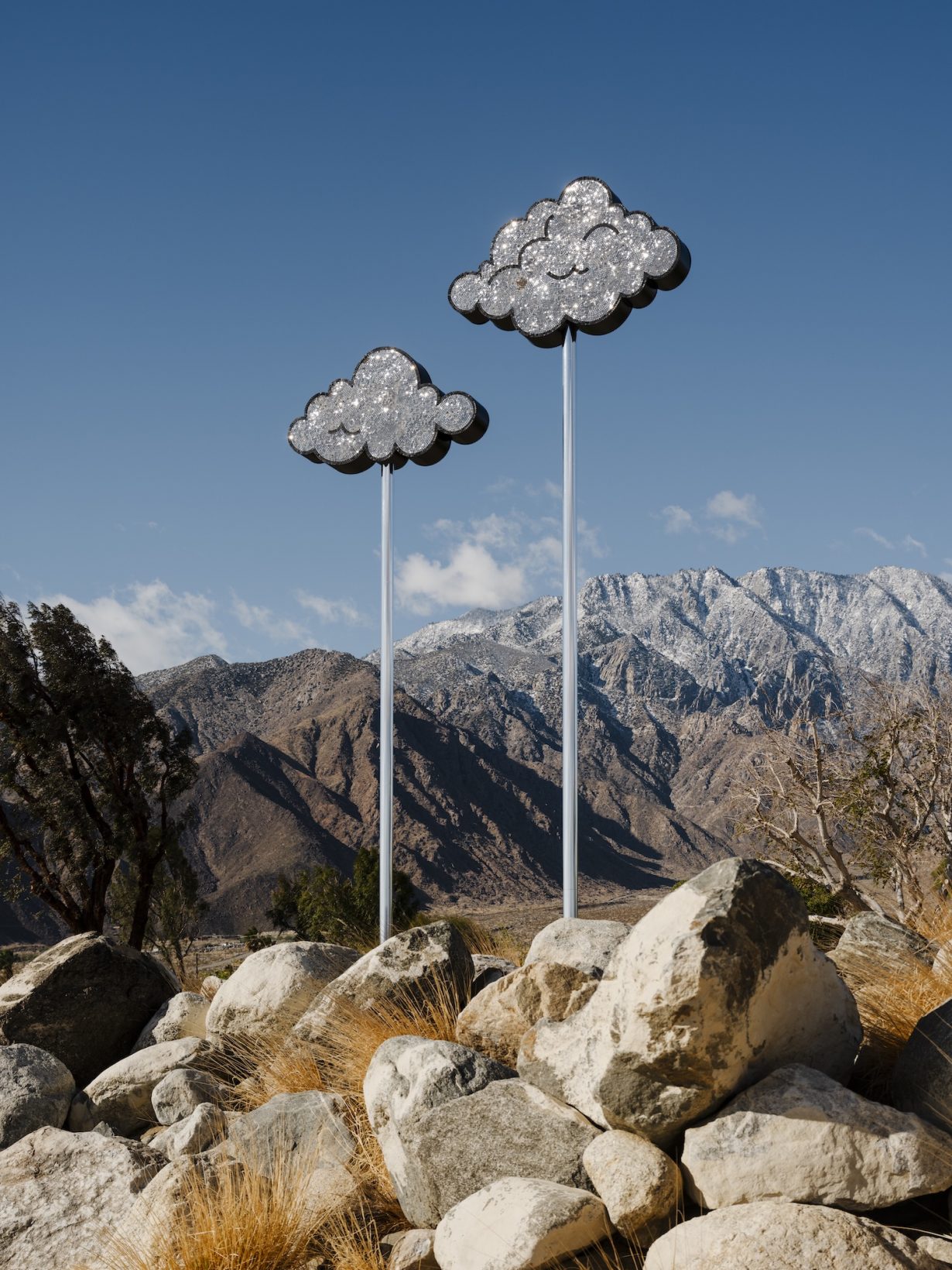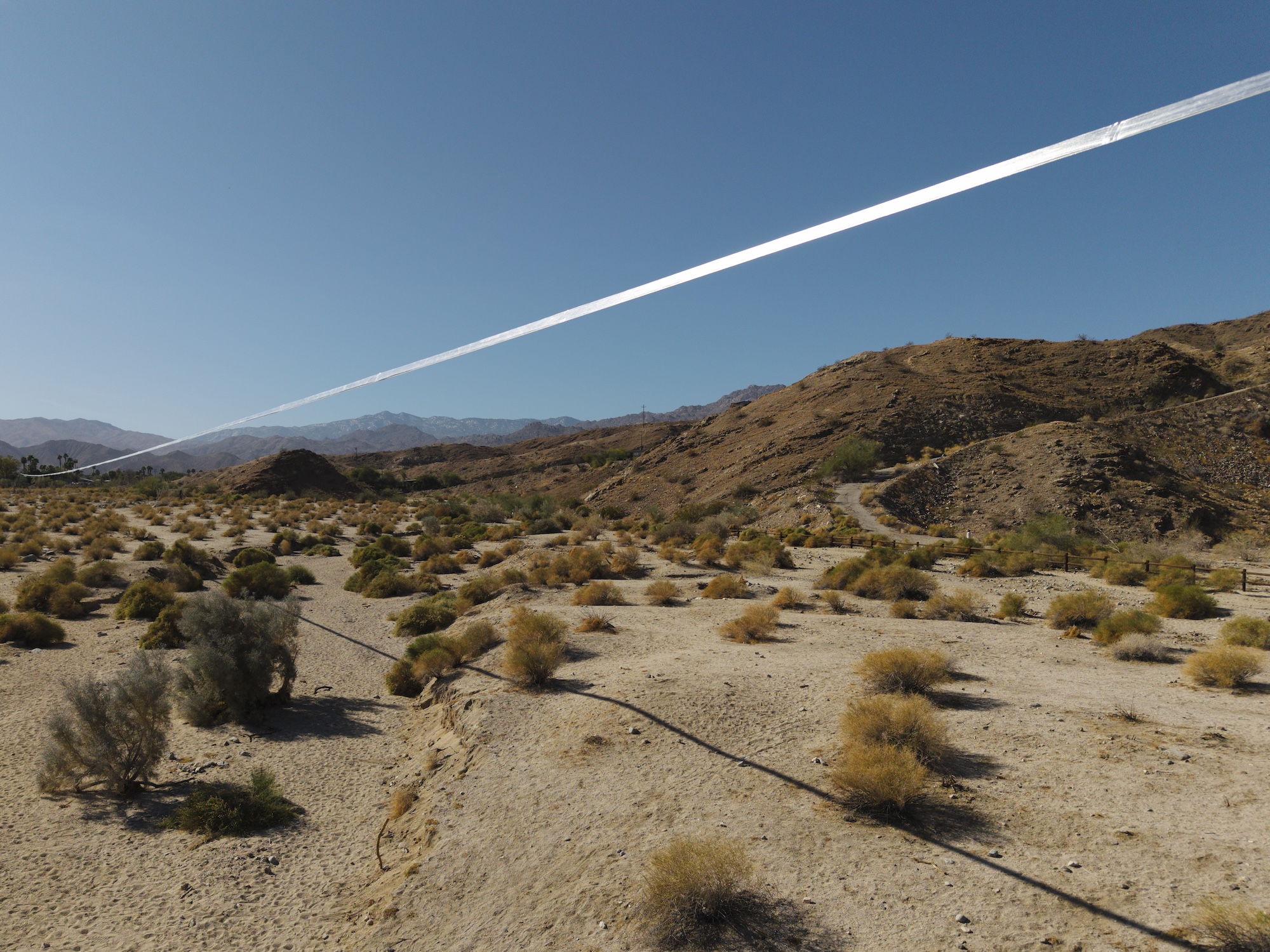The latest edition in Coachella Valley frames its largescale artistic commissions as social and emotional ‘service stations’
A sonorous voice, issuing from an audio player that forms part of Alison Saar’s Soul Service Station (all works 2025), her contribution to the biennial Desert X, recites a poem about overcoming road rage, desperation and anxiety. “Feeling down?” the voice intones over soothing instrumentals. “Time to feel up. / Gonna feel up / at the last chance feeling station.” Like the DIY cousin of Elmgreen & Dragset’s Texas storefront Prada Marfa (2005), Saar’s outdoor installation in Desert Hot Springs, California, which resembles a one-room roadside filling-station, is nonfunctional. It houses a statue of a Black woman dressed as a fuel attendant, standing among a collection of mundane objects: tyres, Mason jars, salvaged sideview mirrors and tables and chairs following a retro red, black and white colour scheme. While Saar’s work, realised with the help of local Coachella Valley students, is singular in its visual intrigue and palpable ‘soul’, Desert X 2025 nevertheless attempts to frame all 11 of its largescale artistic commissions as social and emotional ‘service stations’.
This time around, the biennial is not so much a Land art exhibition, as it’s been previously characterised. Desert X 2025, intent on raising the morale of its visitors via ‘design activism’ and invocations of the desert’s timeless wisdom, is more akin to a largescale social art project. As such, it faces a problem when some of its more aloof sculptures and installations fail to relate meaningfully to their surroundings. Jose Dávila’s The act of being together, a mute congregation of 12 pale marble monoliths stacked in twos and arranged in a circle on the ground beside a wind farm in Desert Hot Springs, is meant to prompt reflections on transience and ‘the potential future’, according to the press materials, but verges on what James Wines, writing for Art in America in 1970, categorised as ‘plop art’, a sculpture placed in public space without regard for its context. The same goes for Sarah Meyohas’s Truth Arrives in Slanted Beams, a white wall snaking across a sandy field in Palm Desert. Visitors can use a series of metal discs with algorithmically engineered surface textures to reflect words and patterns onto the curves of the wall. Reminiscent of the bright midcentury aesthetics of the valley’s sunbaked architecture, Truth Arrives… looks like it ought to be placed next to a hotel pool or at least integrated into the urban fabric the way Ronald Rael’s Adobe Oasis, a 3d-printed mudbrick labyrinth, is built on an unused lot in Palm Springs, sandwiched between a Best Western and a retail complex.

More interesting are those works that appear incidental, such as Muhannad Shono’s installation What Remains, in which swathes of salt-encrusted fabric affixed to plywood posts drape onto the sand like remnants of a tarpaulin fence attempting simultaneously to erect itself and disappear completely. Raphael Hefti’s textile-based kinetic sculpture Five things you can’t wear on tv is equally provisional. This strip of woven polymer fibre – black on one side, silver on the other – stretches from the top of an A-frame at ground level across a field and up the side of a rocky hill. Seen from the top of the hill, where the terminating point of Hefti’s work is bolted to the earth, the sculpture’s shadow trembles over gravel and grass. Neither fixed in space like Walter De Maria’s desert chalk markings nor evocative of the body à la Richard Long’s desire lines, Five things… appears already like a long-neglected remnant of infrastructure, evoking a sense of apathy and disintegration that rings true to life now.
And yet some works that appear vacuously optimistic on a formal level are, in a sense, redeemed by their surroundings. Sanford Biggers’s Unsui (Mirror), for instance, a pair of silver sequinned signs resembling fluffy, cartoonish clouds, are installed on nine-metre metal poles next to a community centre in a historically Black neighbourhood of Palm Springs, where many former inhabitants of the city’s downtown area relocated during the 1960s after being violently displaced by commercial developers. On a Friday evening in March, a group of locals standing beside their pickup trucks was gazing up at Biggers’s glinting clouds as a strong, cold wind ruffled their jewelled surfaces. The men had come to hang out in the community centre’s parking lot, not to see art, although they expressed approval for the sculpture in no uncertain terms. Here, there was no audio track to inspire soul-searching and relaxation, only chatter and laughter, which predated the appearance of Unsui and will probably outlast the run of Desert X.
Desert X 2025 in Coachella Valley, CA, 8 March – 11 May
From the May 2025 issue of ArtReview – get your copy.
